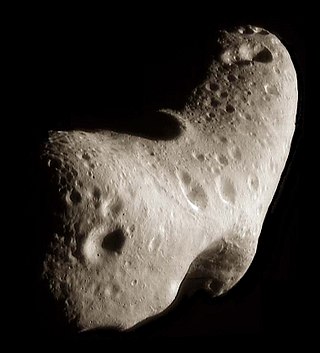
S-type asteroids are asteroids with a spectral type that is indicative of a siliceous mineralogical composition, hence the name. They have relatively high density. Approximately 17% of asteroids are of this type, making it the second-most common after the carbonaceous C-type.

C-typeasteroids are the most common variety, forming around 75% of known asteroids. They are volatile-rich and distinguished by a very low albedo because their composition includes a large amount of carbon, in addition to rocks and minerals. They have an average density of about 1.7 g/cm3.
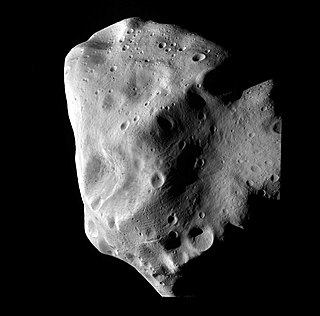
M-type asteroids are a spectral class of asteroids which appear to contain higher concentrations of metal phases than other asteroid classes, and are widely thought to be the source of iron meteorites.
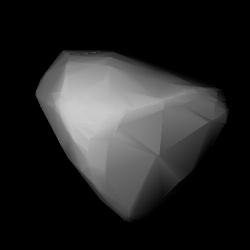
251 Sophia is a stony background asteroid from the outer regions of the asteroid belt. It was discovered on 4 October 1885, by astronomer Johann Palisa at the Vienna Observatory in Austria. The S-type asteroid (S/L) has a rotation period of 20.2 hours and measures approximately 28 kilometers in diameter. It was named after Sophia von Seeliger, wife of German astronomer Hugo von Seeliger (1849–1924).
The Vesta family is a family of asteroids. The cratering family is located in the inner asteroid belt in the vicinity of its namesake and principal body, 4 Vesta. It is one of the largest asteroid families with more than 15,000 known members and consists of mostly bright V-type asteroids, so-called "vestoids".
The X-group of asteroids collects together several types with similar spectra, but probably quite different compositions.
716 Berkeley is a background asteroid from the central regions of the asteroid belt. It was discovered by Austrian astronomer Johann Palisa at the Vienna Observatory on 30 July 1911. The stony S-type asteroid has a rotation period of 15.6 hours and measures approximately 21 kilometers in diameter. It was named after the city of Berkeley, California, where the discoverer's colleague Armin Otto Leuschner (1868–1953) was the director of the local observatory.
743 Eugenisis is a minor planet orbiting the Sun that was discovered by German astronomer Franz Kaiser in 1913.
779 Nina is a large background asteroid, approximately 80 kilometers in diameter, located in the central region of the asteroid belt. It was discovered on 25 January 1914, by Russian astronomer Grigory Neujmin(1886-1946) at the Simeiz Observatory on the Crimean peninsula. The metallic X-type asteroid with an intermediate albedo has a rotation period of 11.2 hours. It was named after the discoverer's sister, Nina Neujmina (Tsentilovich) (1889–1971).
814 Tauris is a dark and very large background asteroid, approximately 109 kilometers in diameter, located the outer regions of the asteroid belt. It was discovered on 2 January 1916, by astronomer Russian Grigory Neujmin at the Simeiz Observatory on Crimea. The carbonaceous C-type asteroid has a longer-than average rotation period of 35.8 hours. It was named after the ancient name of the Crimean peninsula where the discovering observatory is located.

822 Lalage is a background asteroid from the inner regions of the asteroid belt. It was discovered on 31 March 1916, by astronomer Max Wolf at the Heidelberg-Königstuhl State Observatory in southwest Germany. The likely highly elongated asteroid with an unclear spectral type has a short rotation period of 3.3 hours and measures approximately 9 kilometers in diameter. Any reference to the origin of the asteroid's name is unknown.
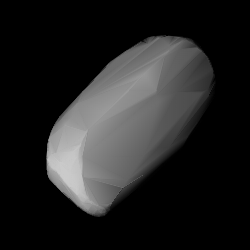
870 Manto is a stony background asteroid and slow rotator from the inner region of the asteroid belt. It was discovered on 12 May 1917, by astronomer Max Wolf at the Heidelberg Observatory in southwest Germany. The likely heavily elongated S-type asteroid has a long rotation period of 122.3 hours and measures approximately 13 kilometers in diameter. It was named after Manto, a prophetess in Greek mythology.
913 Otila is a bright Flora asteroid from the inner regions of the asteroid belt. It was discovered by German astronomer Karl Reinmuth at the Heidelberg Observatory on 19 May 1919. The stony S-type asteroid has a short rotation period of 4.9 hours and measures approximately 12 kilometers in diameter. It was named after a common German female name unrelated to the discoverer's contemporaries, that was taken from the almanac Lahrer Hinkender Bote.
929 Algunde, is a stony Flora asteroid from the inner regions of the asteroid belt, that measures approximately 11 kilometers in diameter. It was discovered by German astronomer Karl Reinmuth at the Heidelberg-Königstuhl State Observatory on 10 March 1920. The S-type asteroid has a short rotation period of 3.3 hours and is likely spherical in shape. It was named "Algunde", a common German female name unrelated to the discoverer's contemporaries, that was taken from the almanac Lahrer Hinkender Bote.
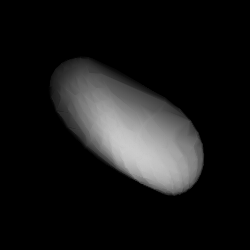
943 Begonia is a large, carbonaceous background asteroid, approximately 70 kilometers in diameter, from the outer region of the asteroid belt. It was discovered by German astronomer Karl Reinmuth at the Heidelberg Observatory on 20 October 1920 and given the provisional designations A920 UA and 1920 HX. The dark C-type asteroid (Ch) has a rotation period of 15.7 hours. It was named after the genus of popular houseplants, Begonia.
977 Philippa is a large background asteroid from the outer regions of the asteroid belt, approximately 65 kilometers in diameter. It was discovered on 6 April 1922, by Russian–French astronomer Benjamin Jekhowsky at the Algiers Observatory in Northern Africa. The C-type asteroid is likely irregular in shape and has a rotation period of 15.4 hours. It was named after French financier Baron Philippe de Rothschild (1902–1988).
1020 Arcadia, provisional designation 1924 QV, is a stony Agnia asteroid from the central regions of the asteroid belt, approximately 11 kilometers in diameter. It was discovered on 7 March 1924, by German astronomer Karl Reinmuth at the Heidelberg Observatory in Heidelberg, Germany. The asteroid was named after the Greek region of Arcadia.
7638 Gladman, provisional designation 1984 UX, is a stony background asteroid from the central region of the asteroid belt, approximately 5.8 kilometers in diameter. It was discovered on 26 October 1984, by American astronomer Edward Bowell at Lowell's Anderson Mesa Station near Flagstaff, Arizona. The S-type asteroid has a rotation period of 17.3 hours. It was named after Canadian astronomer Brett J. Gladman.
1759 Kienle, provisional designation 1942 RF, is a stony background asteroid from the central regions of the asteroid belt, approximately 7 kilometers in diameter. It was discovered on 11 September 1942, by astronomer Karl Reinmuth at the Heidelberg-Königstuhl State Observatory in southwest Germany. The S-type asteroid has a longer-than average rotation period of 29.3 hours. It was named for German astrophysicist Hans Kienle.
3198 Wallonia, provisional designation 1981 YH1, is a stony asteroid and sizable Mars-crosser from the inner regions of the asteroid belt, approximately 7.1 kilometers (4.4 miles) in diameter. It was discovered on 30 December 1981, by Belgian astronomer François Dossin at the Haute-Provence Observatory in France. The S/K-type asteroid has a rotation period of 7.5 hours. It was named after the French speaking region of Wallonia in Belgium.








